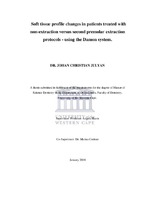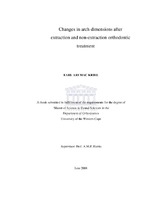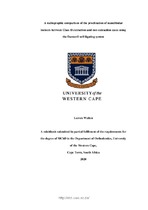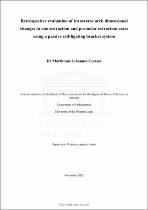| dc.contributor.advisor | Harris, Angela | |
| dc.contributor.author | Julyan, Johan Christian | |
| dc.date.accessioned | 2018-09-04T11:32:36Z | |
| dc.date.available | 2018-12-31T22:10:05Z | |
| dc.date.issued | 2018 | |
| dc.identifier.uri | http://hdl.handle.net/11394/6374 | |
| dc.description | Magister Scientiae Dentium - MSc(Dent) (Orthodontics) | |
| dc.description.abstract | Orthodontic treatment has the ability to improve the aesthetics and the function of
patients. In order to create space, orthodontic treatment often requires removal of
teeth. The most common teeth removed for orthodontic treatment are the
premolars. It has become popular to remove second premolars in certain cases
where the soft tissue profile should not be altered.
The Damon self-ligating orthodontic system is renowned for not requiring dental
extractions in the majority of cases. The effect of extractions on the soft tissue
profile of patients, in conjunction with using the Damon system, has therefore not
been researched. It is important to understand the effect that orthodontic treatment
and extractions can have on the soft tissue profile of patients. This effect can
accurately be determined by making use of the soft tissue cephalometric analysis,
developed by Dr Reed A. Holdaway in 1983. | |
| dc.language.iso | en | |
| dc.publisher | University of the Western Cape | |
| dc.subject | Orthodontic treatment, Soft tissue profile changes, Premolar extractions, Second premolar extraction, Non - extraction, Cephalometric analysis, Damon System, Self-ligating brackets, Fixed appliance, Holdaway soft tissue analysis | |
| dc.title | Soft tissue profile changes in patients treated with
non-extraction versus second premolar extraction
protocols - using the Damon system | |
| dc.rights.holder | University of the Western Cape | |




